Is the Person That You’re Caring For at Risk of Developing a Pressure Injury?
People who are stuck in a bed or chair, and find it difficult to move themselves, are at a higher risk of getting pressure injuries. It is very important to take preventative measures if you or the person you’re caring for has:
- Limited mobility
- Reduced sensation or difficulty feeling skin
- Poor nutrition
- Cannot control bowels or bladder
- Is underweight or overweight
- Smokes
- Has medical conditions such as diabetes or vascular disease affecting blood flow
Types of Forces That Cause Pressure Injuries
The risk of developing a pressure injury is also increased by forces like pressure, friction, and shear acting on the body.
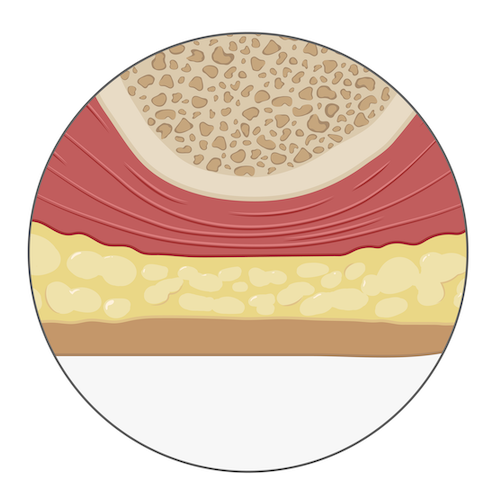
Pressure
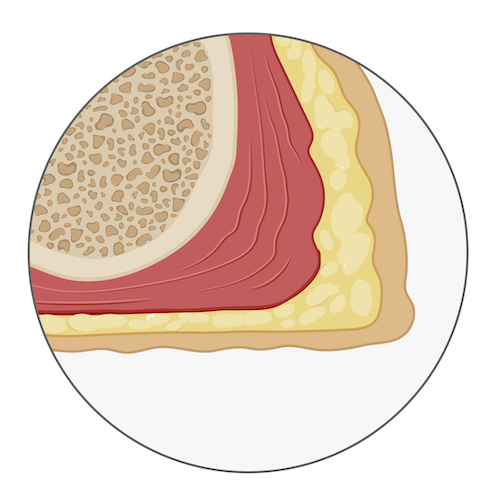
Friction
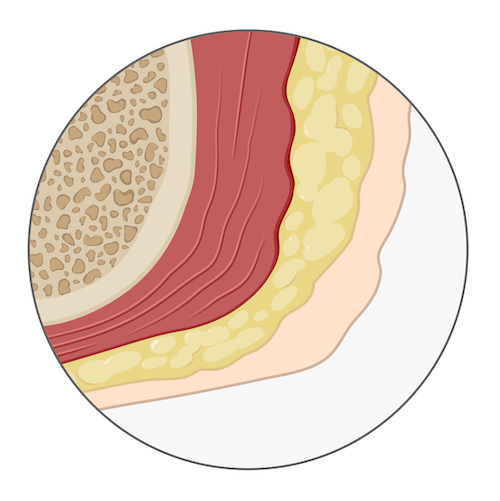
Shear
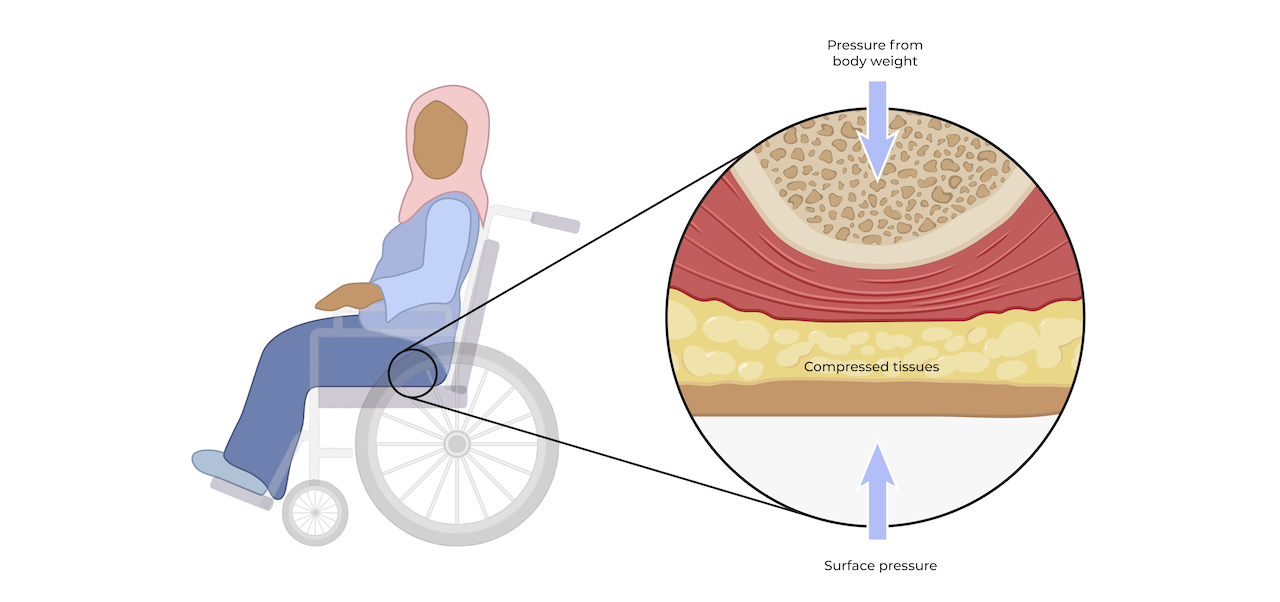
Pressure
Prolonged pressure on a specific body area can lead to a pressure injury by flattening, or squeezing, soft tissues between bones and external surfaces, reducing blood flow, which weakens tissues and can cause tissue death.
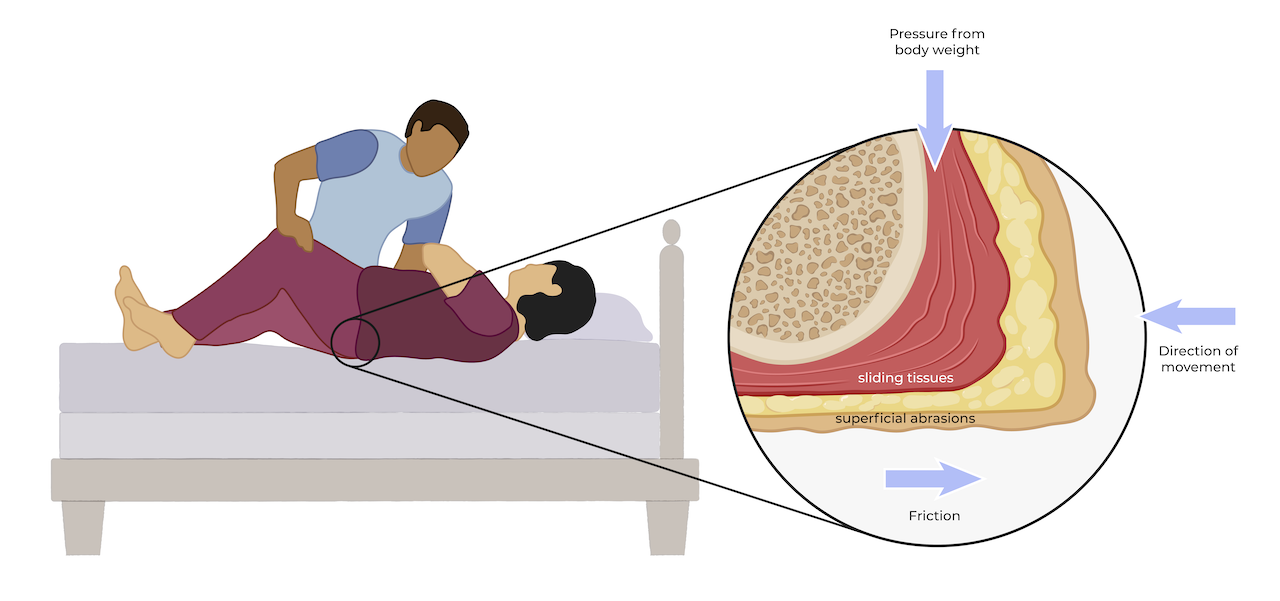
Friction
The friction from skin rubbing against clothing bedding during repositioning can weaken the skin, making it easier to break down and develop breaks in the outer layers of the skin.
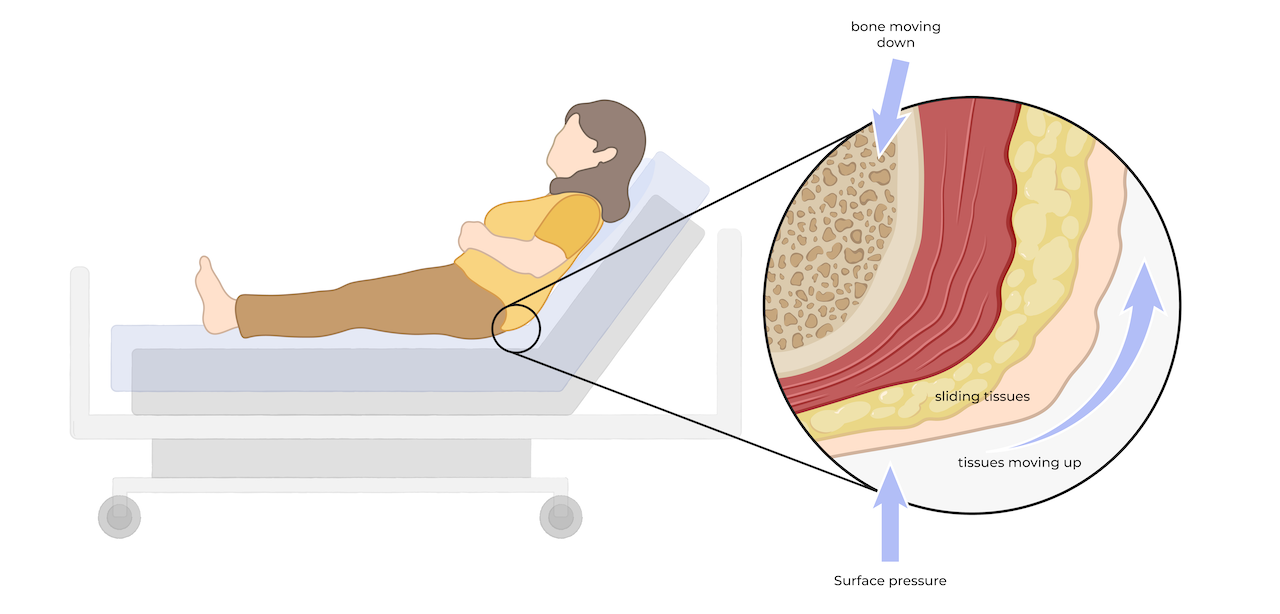
Shear
Shear occurs when forces pull the skin and underlying tissues in two different directions at once. For example, gravity can move muscle, fat, and bone downwards, while the outer skin remains in contact with external surfaces, such as the bed, causing the tissue to move in the opposite direction.
High Risk Areas
Pressure injuries can develop over different parts of the body depending on the person’s position in their bed or chair. Certain areas, typically where bones are close to the surface, are considered “high risk areas” and must be checked frequently. Pressure injuries can occur anywhere on the body, so it is crucial to inspect all areas, and not just high risk ones.
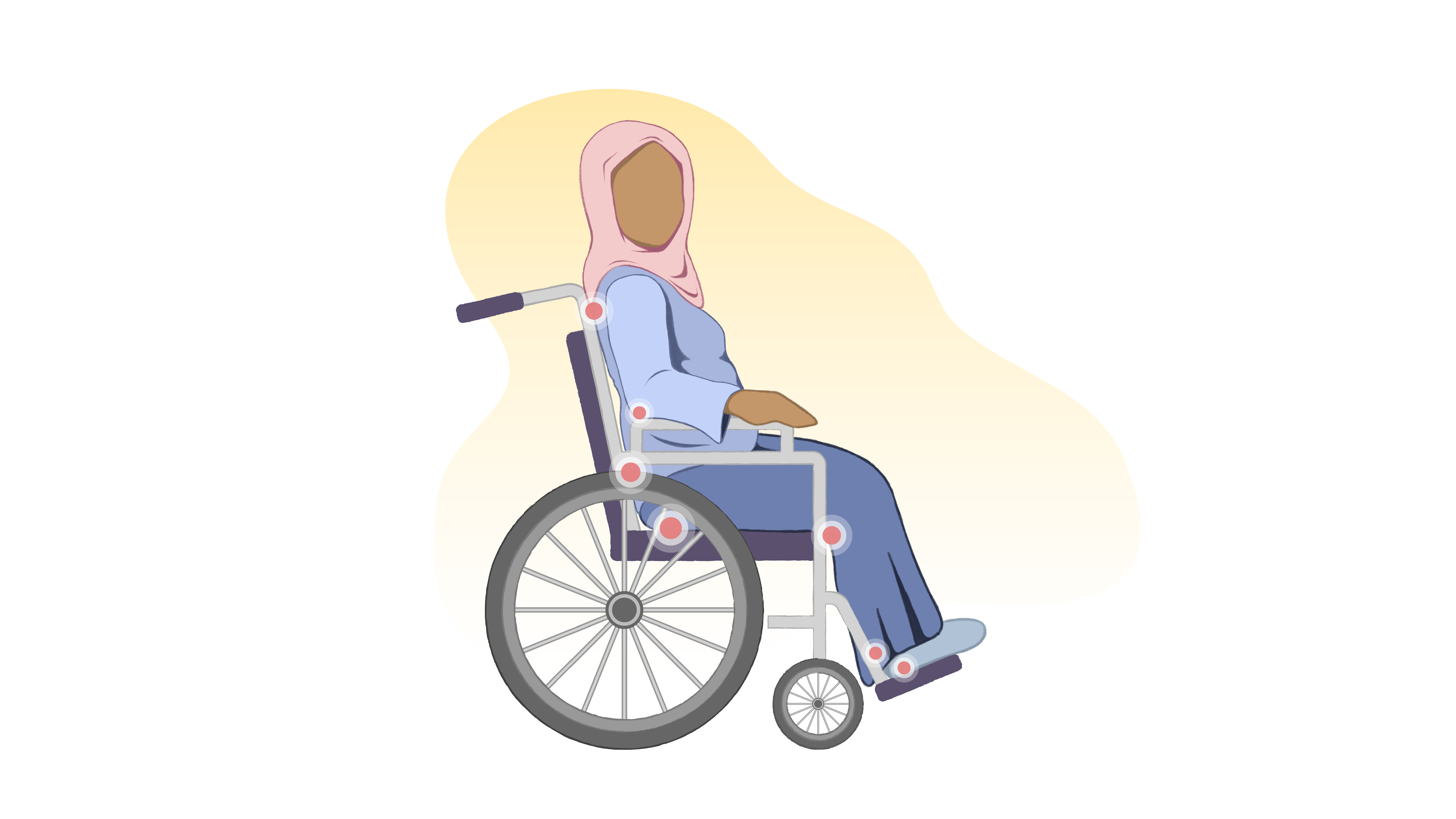
High Risk Areas Sitting in a Wheelchair
- Shoulders
- Elbows
- Lower back (sacrum or tailbone)
- The sit bones
- Hips
- Back of the knees
- Back of the heels
- Bottom of the heels
If you or the person in your care sits in a wheelchair, pressure should be removed every 15 minutes.
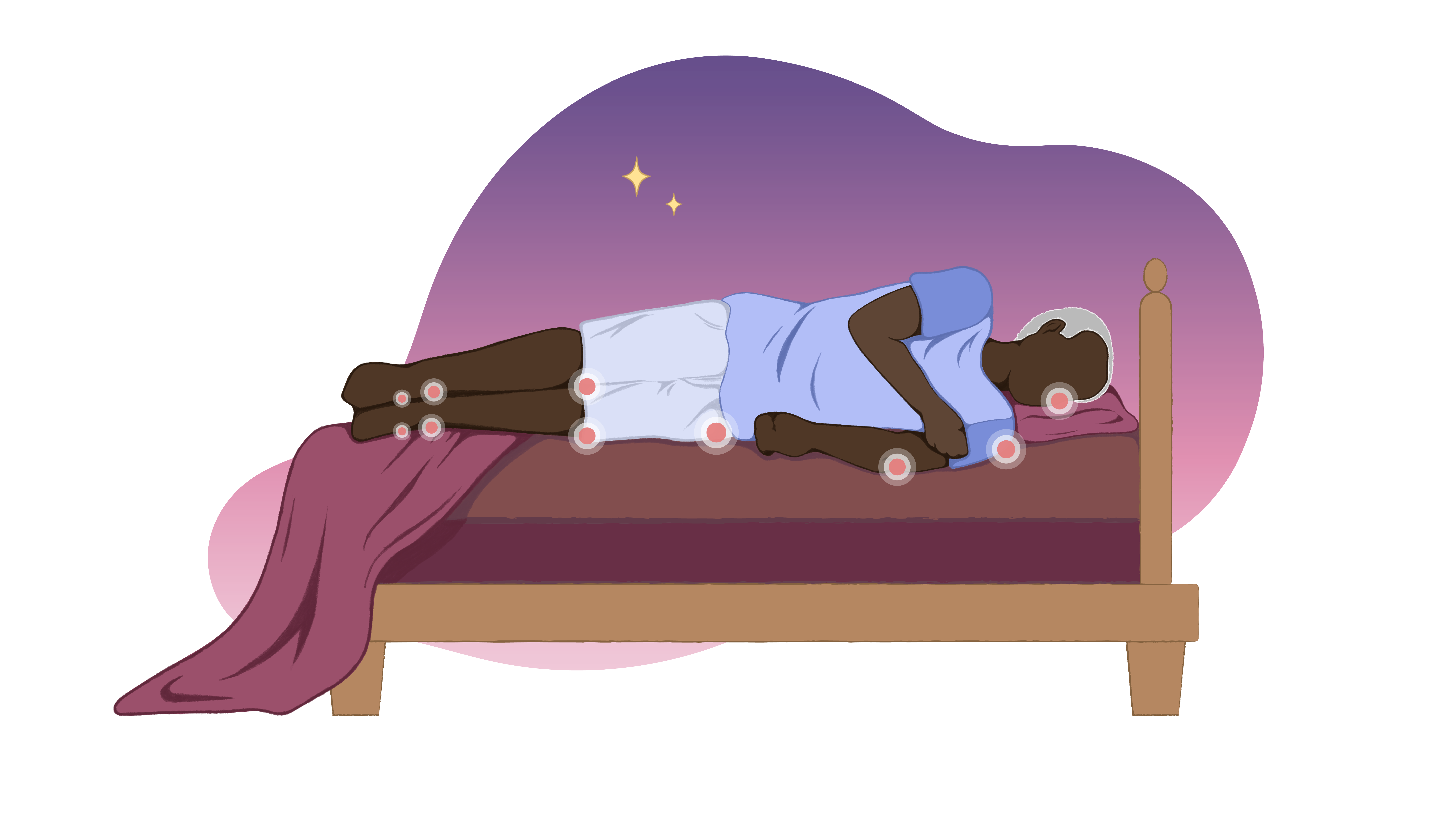
High Risk Areas Lying on the Side
- Side of the head
- Ears
- Side of the shoulder
- Outside of the elbow
- Outside of the hips
- Inside of the knees
- Outside of the knees
- Inside of the ankles
- Outside of the ankle
- Outside of the foot
- Bottom of the heels
Note: Only the side that is being laid on is at risk of developing a pressure injury.
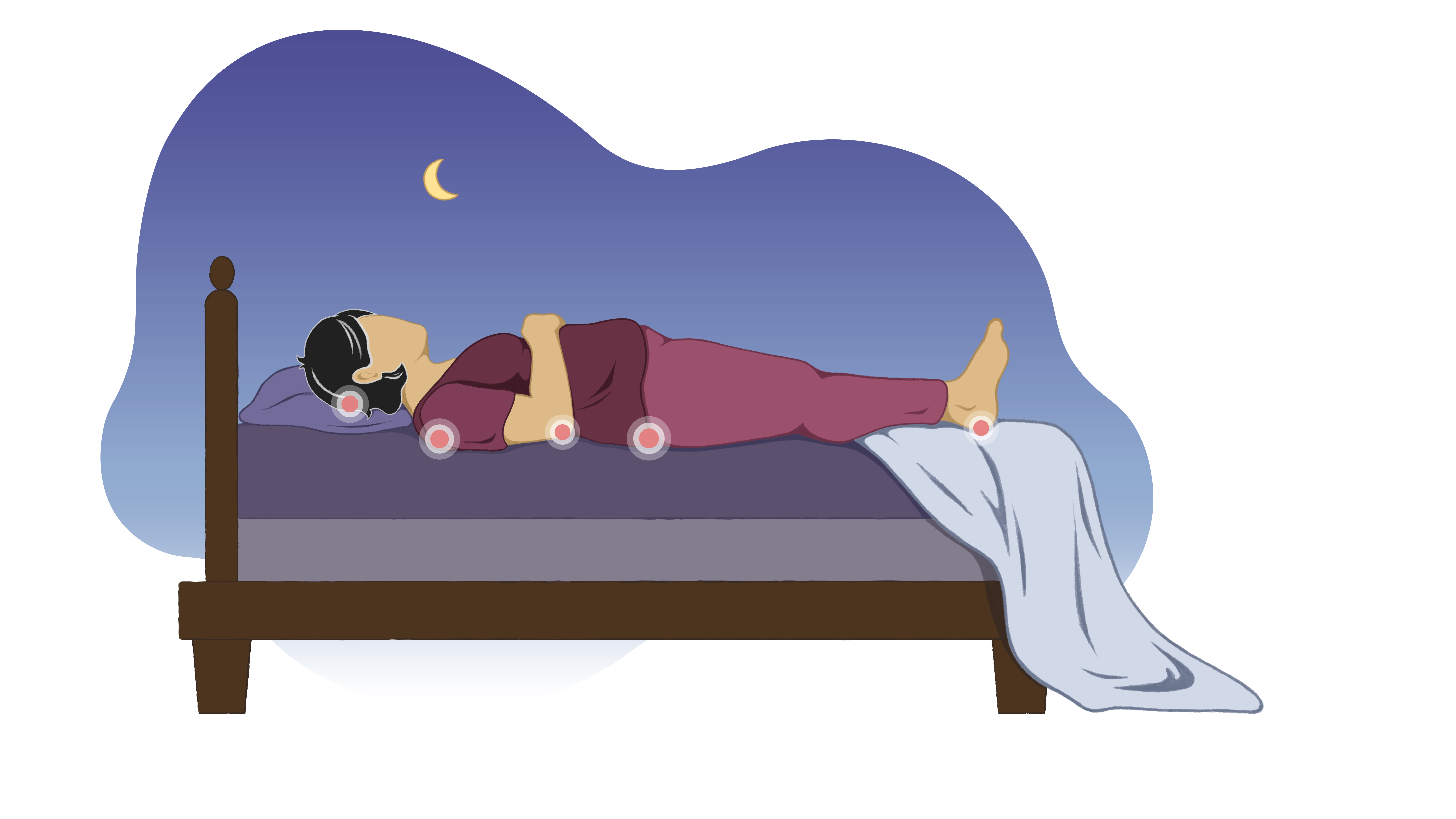
High Risk Areas Lying Flat in Bed
- Back of the head
- Behind the shoulder blades
- Underneath the elbows
- Lower back (sacrum or tailbone)
- Back of the heels
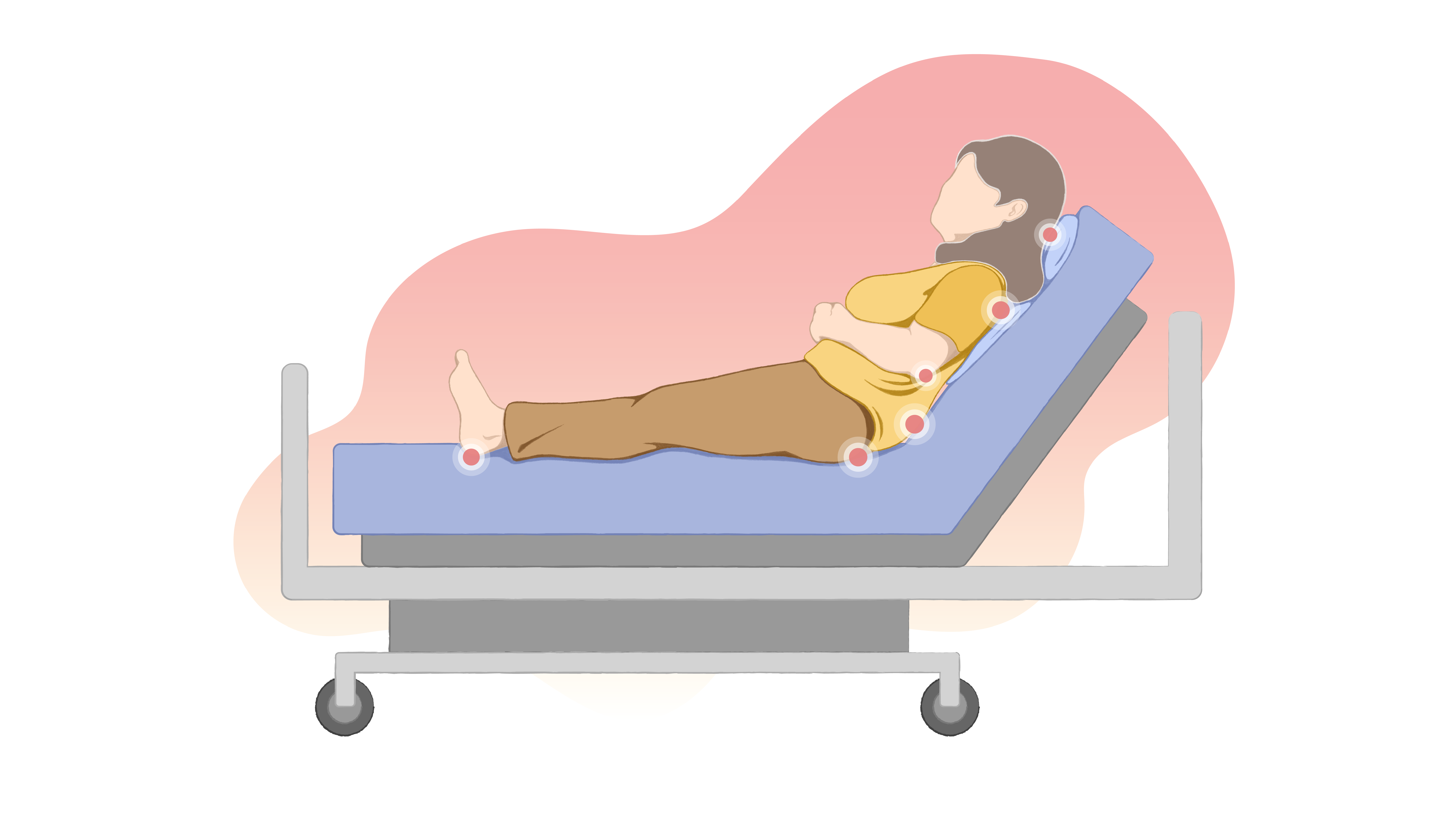
High Risk Areas Sitting Up in Bed
- Back of the head
- Behind the shoulder blades
- Underneath the elbows
- Lower back (sacrum or tailbone)
- The sit bones
- Back of the heels
When you or the person you are caring for is lying down, their position should be changed every 1-2 hours. If they are laying on their back, you can offload, or remove the pressure, by moving them onto their side. Small changes in position can also be helpful between major position changes.
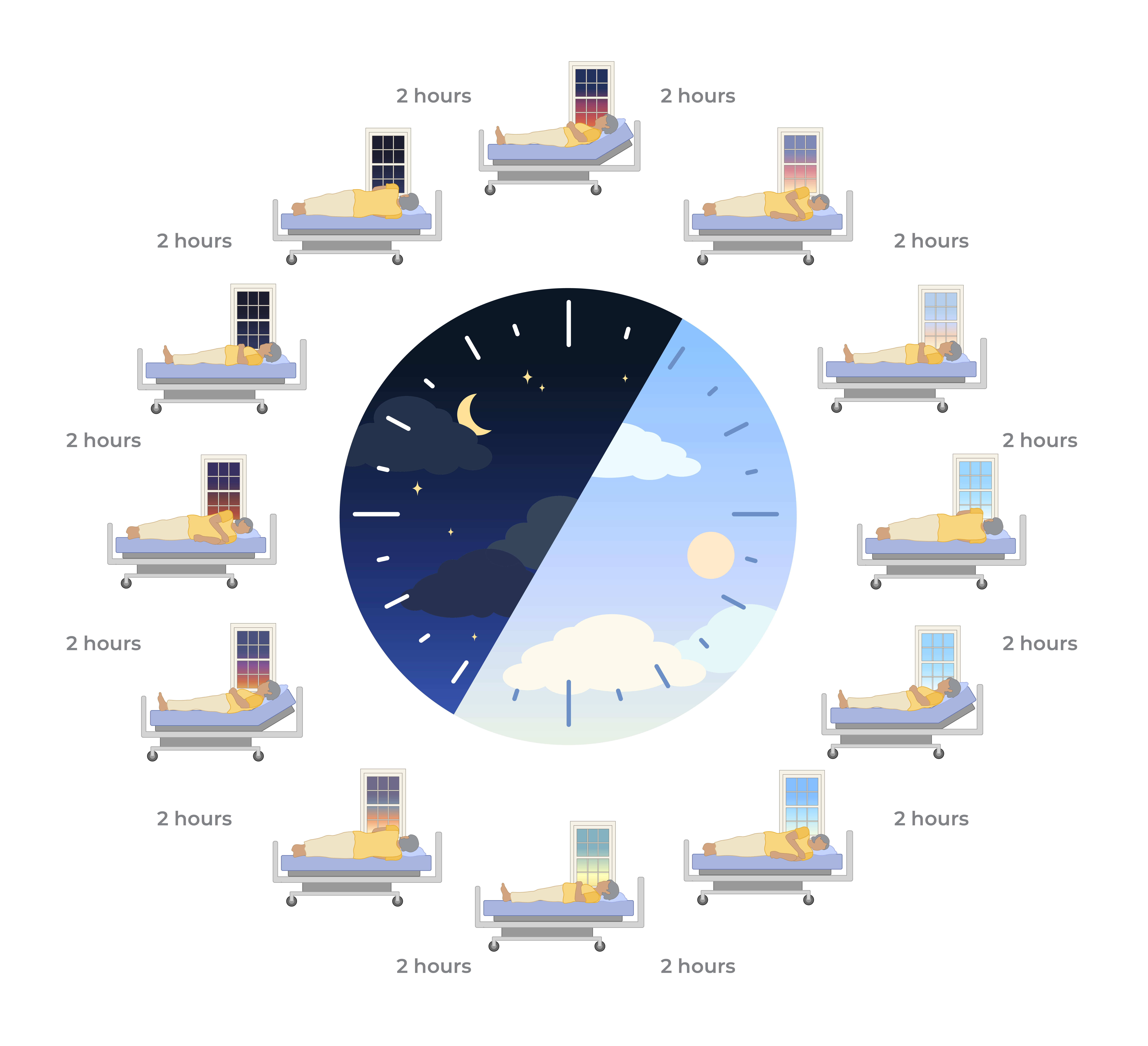
It is very important to check all of these areas for changes in the skin and to regularly reposition and offload, or remove pressure. Keep an eye on these areas for changes in skin color, temperature, hardness, or shininess. If you are caring for someone, ask the person that you’re caring for if they feel any itchiness, burning, skin irritation, or pain. If you notice any of these signs, change your or their position to relieve pressure on the affected area.
You can find more information on recognizing these signs and symptoms here: